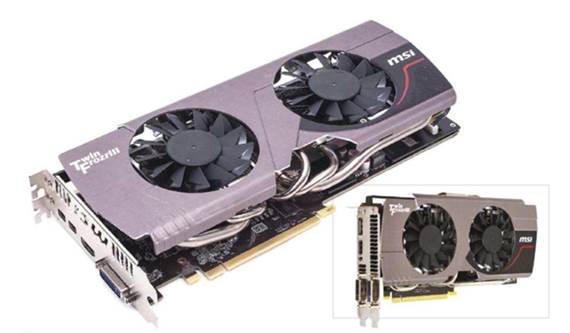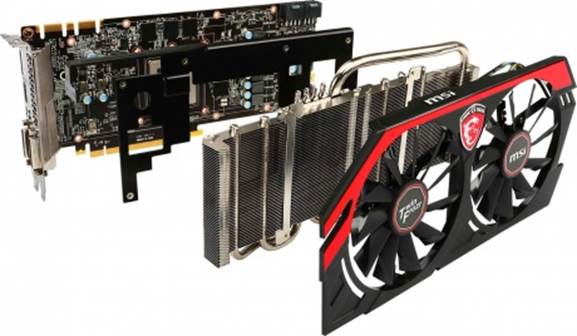“There hasn’t been a whole lot of
change with the silicone”
There’s has been a refresh of Kepler last
month with three new cards available for your gaming pleasure. At the bottom of
the pile are the GTX 760 Ti (not yet released), the GTX 770 and the GTX 780.
Each of these cards is a “refresh” in the Kepler series, though it each has
managed to ear themselves a GTX 7 Series badge. The GTX 760 Ti will ideally
fill the market space of the current GTX 670, while the GTX 770 is set for
replacing the GTX 680 and finally the GTX 780 fits somewhere in between the GTX
770 and the Almighty GTX Titan in term of raw compute power. Overall, there
hasn’t been a whole lot of change happening with the silicone, with most
advancements being on memory and GPU clock speeds. The GTX 780, however, does
net itself an extra 1GB of DDR RAM when compared to the GTX 680; something many
ultra-high resolution users will no doubt enjoy. Given that brief intro to the
small changes made to the cards, let’s move on!
MSI GTX 770 Twin Frozr Gaming Edition
The chilliest GPU
Price: $529
MSI has always provided stiff competition
to ASUS and Gigabyte in the GPU marketplace, and the launch of the GTX 770 was
no different. MSI are currently offering a handful of GTX 770 video cards,
though the one we were most excited to look at is the new “G” (gaming) series
card from MSI. What you essentially get with this card is a middle ground
between the vanilla Twin Frozr cards on offer, and the beefed up Lighting
series aimed at over-clockers and high-end enthusiasts. You can quickly tell
this cards market audience not only by the fact it is factory overclocked, but
also by its bundled software.

MSI
GTX 770 Twin Frozr Gaming Edition
MSI has been kind enough to include two
cool new software, the first of which is called quite simply the “MSI Gaming
App”. This is a very simple tool, allowing for a quick switch between three
different presets on your video card, gaming mode, eco mode and default mode.
It shouldn’t take a rocket scientist to figure out what each of these three
modes accomplish and they will surely be welcomed by gamers wanting superior
control over their GPU without having to setup custom profiles in MSI
Afterburner and fiddle around with confusing voltages and stability issues.
The next cool software included in the
package is called “Predator”. This application allows the user to capture video
and screenshots using pre-determined folder destinations with simply one button
activation. The performance loss on video recording obviously deviates
depending on your recording resolution and frame rate, though in our opinion it
was a lot smoother than FRAPS, and used up less hard disk space for the video
files when recording in comparable qualities.
Gaming performance is, as you’d expect,
nothing short of superb, with the GTX 770 performing slightly above a reference
GTX 680, this overclocked edition manages to take a more noticeable lead. This
however isn’t necessarily giving you any better value for money as since the
launch of the GTX 770 we’ve been a fairly steady decline in the sale price of
the GTX 680 with reference models going on sale for as little as $419, while
this card is commanding a $519 price tag. Does it perform $100 better than a GTX
680? Probably not, though there are more important things than raw frames per
second to some people.
There is still one glimmer of hope left
however, and that is thermal results! The new Twin Frozr IV cooler equipped on
this card manages to keep the GPU core at a nice and cool 28C, one of our
lowest results ever and more than 11C cooler than your average GTX 680. This is
possible by using the included “MSI Gaming App” and setting the card to “Eco
Mode” before taking our reading. If left on default mode, our reading was a
little higher at 30C.

The
new Twin Frozr IV cooler equipped on this card manages to keep the GPU core at
a nice and cool 28C, one of our lowest results ever and more than 11C cooler
than your average GTX 680
Load temperatures were also very impressive
as the Gaming App also takes control of fan profiles. With Gaming Mode selected
we played our usual BF3 map loop and recorded a temperature of only 60C. The
card remained at more than acceptable acoustic level both inside a PC case and
whilst sitting on an open test bench. Comparing these results once more to the
reference-cooled GTX 680, we observed 19C lower temperatures, despite a higher
power draw.
Verdict: 7/10
·
Robust performance
·
Outstanding thermals
·
Nice bundled software
·
Mid-range price
·
Disappointing core clock
·
A great card if you will use the bundled-in
software.